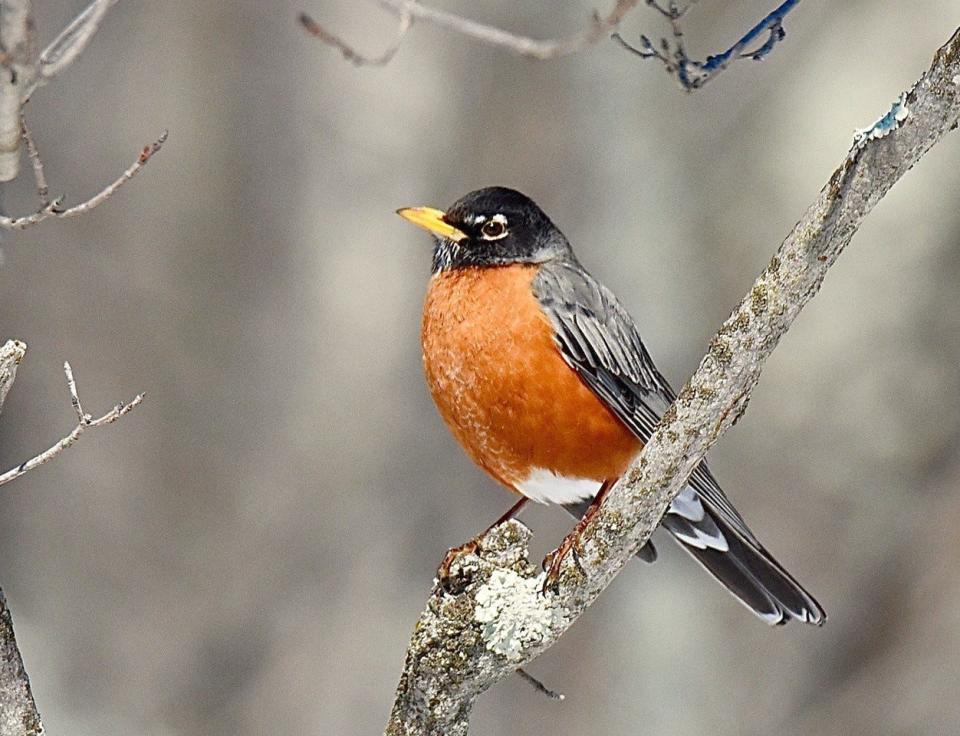The sound of robins chirping is a telltale sign: Spring is in the air
On a recent dreary morning — mist and rain, soggy ground — I dragged out of bed, shuffled off to the kitchen, put a pot on and stared out my window.
What I saw changed my world. It was a red, red robin, and he was bob-bob-bobbin’ along. Through muck and mire, this bird tossed wet leaves in the air, seeking worms and the like for his breakfast.
When I say “changed my world” I mean lifted it up. From sleepy head, to full-speed ahead, I felt energized, then inspired. I wanted to live, love, laugh and be happy. You can’t ask more of a songbird than that.

The good news is robins are spreading their cheer everywhere. Not only are these cocky lawn strollers a neighborhood fixture, you can find them on mountains, in forests and just about everywhere else. For those of us tucked up in far northern regions, their ubiquitous presence at this time of year signals spring has at last made the scene.
As I gazed out upon him, my first robin of spring was up in a tree, sounding off.
“Tut! Tut! Squeak!” was the sound, not that rich, “cheery-up” breeding song. For the moment, at least, his thoughts ran more toward staking a claim on some turf than on wooing females who weren’t there.
More: No matter the season, forests bring bounty, mystery and hope for tomorrow
You can tell males from females by looking them over. His eye ring, his beak, his black head — they’re all brighter in color. As I watched my bird and listened, I wondered where he had spent this past winter. While it’s true the majority of robins migrate south in fall, not all of them do. Those that stay must find fruit that remains on trees and shrubs. If you don’t have fruit nearby, you’ll assume every robin in Upstate New York has departed. Truth be told, a flock might have located crab apples just minutes away.
There’s an advantage for robins surviving winter near their breeding grounds. They’ll get first dibs on the best nesting territories when spring arrives.
If they do migrate south, some robins will stop short of warm southern states. My robin could have wintered in Scranton. If he did, he had only a short flight back home to my place.
Robins do come back home. Those you saw in your back yard last summer will want to return. Males come back first, with females arriving a couple weeks later.
While robins can successfully nest three times in a summer, that doesn’t guarantee they will pump out a bunch of birds destined to live a long time.
On average, only 40% of fledged youngsters survive until November. From then on, only half the robin population alive at that time will live to see next breeding season.
My survivor up there in the tree seemed of good breeding stock. Loud of voice, bright in color, he called out as if he were itching to take on all comers.
Harry Woods wrote the classic song about a red, red robin who went bob-bob-bobbin’ along in 1926. For that I will always be grateful.
E-mail Rick at rmarsi@stny.rr.com
This article originally appeared on Binghamton Press & Sun-Bulletin: Robins have returned to the Southern Tier, ushering the spring season
